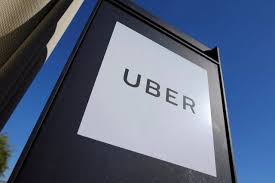Ride-hailing service Uber is now making money after its early losses. The company achieved its first profit in Q2 2023.
Unexpected profit. This success was attributed to more travel and work-from-home schedules.
Uber reported a $394 million profit in Q2 2023. The company’s first running profit was $326 million, and its first free cash flow was $1.14 billion. Uber shares rose 3.7% after this victory.
Uber’s second-quarter net income was $9.23 billion, up 14.4% from 2022. Uber’s $33.6 billion cash bookings rose 16%. The firm earned 25% more from rides ($16.73 billion) and 12% more from deliveries ($13.88 billion).
Read also: Uber rolls out audio recording safety feature in Kenya following Nigeria launch
Uber CEO Dara Khosrowshahi
Uber CEO Dara Khosrowshahi said high demand, fresh growth methods, and cost control led to a successful quarter, with trips up 22% and a GAAP operating profit for the first time in Uber’s history. In the quarter, 6 million drivers and couriers made a record $15.1 billion. Disciplined preparation and execution, a record turnout, and lots of participation led to both successes. Uber’s growth is steady.
Uber projected total bookings for the current quarter to be between $34 billion and $35 billion and adjusted EBITDA to be between $975 million and $1 billion, which was more than what analysts expected.
Uber’s great performance in Q2 2023, which was driven by strict execution, a record number of viewers, and a lot of involvement, shows that the company is able to keep making money quickly and steadily. This is a key step on the company’s way to becoming profitable.
Uber’s next steps
The ride-hailing service stated that Nelson Chai, its Chief Financial Officer, will retire on January 5. This exit is one of the most notable since the company’s 2019 IPO.
It is currently searching for a Chief Financial Officer to oversee the company’s finances.
“When I joined the company in 2018, Dara asked me to lead the financial transformation of the company,” Nelson Chai stated of his resignation. Our Q2 results demonstrate that change. I thank Dara for his participation and am happy with our outstanding work.”
Uber’s maturation and Chai’s departure coincide. Uber’s core business has survived rising inflation because customers are still willing to pay a premium for the convenience of hailing a cab and having food delivered.
Uber’s driver shortage caused higher rates and longer wait times. However, the corporation has solved this problem and exceeded pre-pandemic driver supply levels. Driver supply rose 33% in the second quarter compared to the year before.
Uber is always adding new features and goods to its app to improve its services. A teen rides programme allows teens to use the service with restrictions; group and guest rides can be booked; video gift messaging can personalize the experience; and a boat service expands its offerings beyond land-based transportation.
